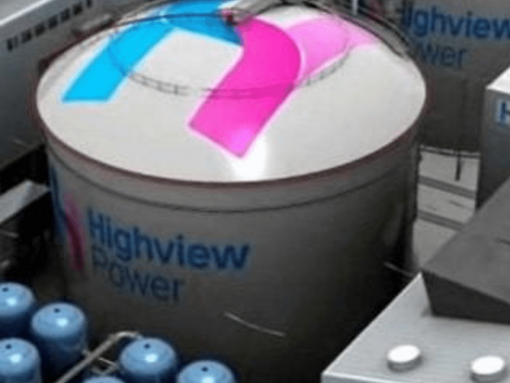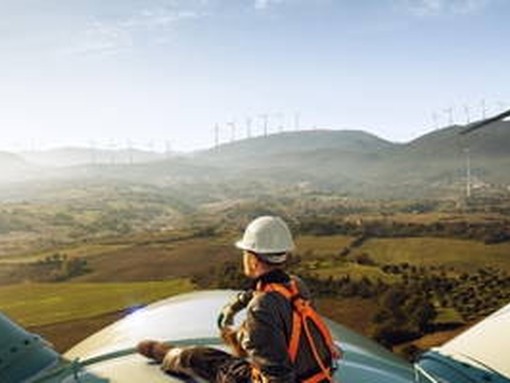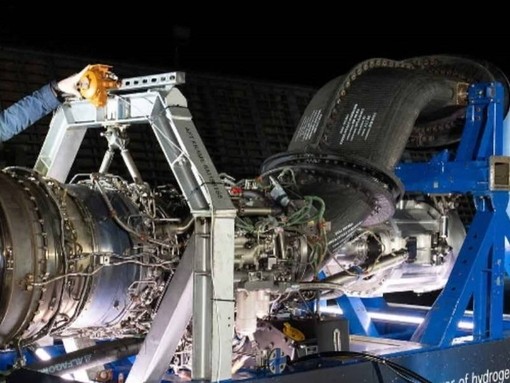
A glimpse into the future: transforming UK energy infrastructure
In a world grappling with the urgent need to combat climate change and transition to sustainable energy sources, the future of UK energy infrastructure holds great promise. As technology continues to advance, the way we generate, distribute, and consume energy is poised for a transformative journey.
This article explores the possibilities for energy infrastructure in the United Kingdom and offers a global perspective, with a focus on the potential scenarios five, twenty, fifty, and one hundred years from now. We also explore the barriers that may prevent these developments and what the UK will need to overcome to fulfil its clean energy ambitions.
Commentary provided by Nabeel Ashraf, Associate Director at Morson Talent

Five Years from Now: Accelerating Transition
In just five years, we can expect significant advancements in renewable energy adoption and grid modernisation. The United Kingdom, known for its commitment to carbon neutrality, will likely witness a substantial increase in renewable energy capacity. Solar and wind energy will play a pivotal role, with improved efficiency and cost-effectiveness. Furthermore, energy storage systems will experience rapid innovation, enabling seamless integration of intermittent renewables into the grid.
The deployment of smart grids will enhance efficiency, allowing for real-time monitoring and demand response mechanisms. Electric vehicles (EVs) will become more commonplace, supported by an extensive charging infrastructure and incentives for their adoption. The UK government’s focus on fostering clean energy startups will drive technological breakthroughs, leading to a diversified energy mix and a more decentralised energy system.
Globally, emerging economies will leapfrog the traditional energy infrastructure model, embracing renewable energy as a cost-effective and sustainable solution. The integration of decentralised energy systems, microgrids, and community-owned renewable projects will empower individuals and local communities, driving the democratisation of energy.
It’s encouraging to see the focus on clean energy adoption and grid modernization within a relatively short timeframe of five years. The United Kingdom’s commitment to carbon neutrality aligns with the global need for urgent action. The deployment of smart grids and the rise of electric vehicles are positive developments that will enhance energy efficiency and promote sustainable transportation. The development of AI will be the fuel to enable this acceleration and central to developing sustainable engineering solutions that allow for this transition
By the two-decade mark, the energy infrastructure landscape will undergo a profound transformation. The United Kingdom will achieve a significant reduction in carbon emissions, surpassing its climate targets. Renewable energy sources will dominate the energy mix, supported by advanced storage solutions, such as grid-scale batteries and hydrogen technologies. Offshore wind farms will thrive, harnessing the UK’s abundant wind resources.
Smart cities will be a reality, leveraging interconnected technologies to optimise energy consumption, reduce waste, and enhance liveability. Buildings will be designed with energy efficiency in mind, incorporating innovative materials and renewable energy generation systems. The electrification of heating and industrial processes will contribute to decarbonisation efforts, bolstered by breakthroughs in green hydrogen production.
On the global stage, interconnected energy grids will emerge, enabling seamless energy exchange across continents. Supergrids powered by renewable energy will facilitate the sharing of resources and balance intermittent generation. Developing countries will transition from fossil fuels directly to renewable energy, leapfrogging the carbon-intensive phases of industrialisation. The global energy transition will be well underway, fostering international cooperation and redefining geopolitical dynamics.
The vision of the United Kingdom achieving significant carbon emission reduction and clean energy dominance in two decades is ambitious and commendable. The emphasis on smart cities, energy-efficient buildings, and the electrification of heating and industrial processes showcases a holistic approach to sustainability. The mention of breakthroughs in green hydrogen production is crucial, as hydrogen can play a vital role in decarbonizing sectors that are challenging to electrify. If we can achieve super grids that facilitate sharing of resources will be the ultimate euphoria, may be AI will help speed up this process.
Fifty Years from Now: Energy Autonomy
Looking half a century ahead, the energy infrastructure will have undergone radical changes. The United Kingdom will have achieved energy autonomy, relying almost entirely on renewable sources. Vast offshore wind farms, tidal and wave energy converters, and floating solar installations will harness the UK’s natural resources to meet the nation’s energy demands sustainably.
Energy storage technologies will have evolved dramatically, with advanced long-duration storage solutions like gravity-based systems and novel battery chemistries. Artificial intelligence and machine learning will be deeply integrated into the energy infrastructure, optimising generation, storage, and consumption patterns based on real-time data.
The global energy landscape will witness a harmonised grid infrastructure, connecting continents and enabling a seamless flow of clean energy. Intercontinental power transmission lines will facilitate the exchange of surplus energy between regions with varying renewable potential. Innovations in energy transport, such as hydrogen pipelines and renewable fuels, will power aviation and long-distance transportation, dramatically reducing carbon emissions.
The goal of achieving energy autonomy in fifty years, relying mostly on clean energy sources, is an admirable aspiration for the UK. The integration of advanced storage technologies, artificial intelligence, and machine learning into the energy infrastructure demonstrates the need for innovative solutions to maximize the potential of renewable energy. The mention of intercontinental power transmission lines and renewable energy-powered transportation highlights the importance of global cooperation and sustainable development.
One Hundred Years from Now: Energy Utopia
In this bold vision of the future, the energy infrastructure will reach unparalleled levels of sustainability and efficiency. The United Kingdom, together with the world, will have achieved a state of carbon negativity, actively removing greenhouse gases from the atmosphere. Renewable energy technologies will be highly advanced, with breakthroughs in fusion energy, space-based solar power, and bio-inspired energy generation.
Energy storage systems will be capable of storing vast amounts of renewable energy for extended periods, eliminating the need for fossil fuel backups. Nanotechnology and advanced materials will enable ultra-efficient solar panels and energy harvesting from previously untapped sources.

The concept of a global energy internet will be realised, interconnecting all countries and enabling the seamless sharing of clean energy. A decentralised energy system will flourish, with individuals and communities actively participating in energy generation and sharing. Nature-inspired infrastructure designs will seamlessly blend with the environment, further enhancing sustainability and biodiversity.
The future of energy infrastructure is brimming with possibilities, offering a glimmer of hope in our race against climate change. From a renewable energy revolution to advanced storage technologies, from interconnected grids to smart cities, the transformations in the UK and beyond will reshape our relationship with energy. As we progress toward a cleaner, more sustainable future, let us embrace these opportunities and work together to build a world powered by the forces of nature.
The long-term vision of achieving carbon negativity and highly advanced renewable energy technologies is a compelling and ambitious goal for the UK and the world. The integration of nature-inspired infrastructure designs and the seamless sharing of clean energy through a global energy network would require the world to unite, but would demonstrate our deep commitment to sustainability and biodiversity. Breakthroughs in fusion energy, space-based solar power, and advanced energy storage technologies reflect the wolds ongoing pursuit of cutting-edge solutions for a sustainable future.
Challenges and Potential Impact on UK Energy Infrastructure Development
While the future of energy infrastructure in the United Kingdom holds great potential, several challenges and obstacles could impede its development. These barriers, if not effectively addressed, may have significant ramifications for the country as a whole. Let us explore some of these potential hurdles and their possible impact:
The acknowledgement of challenges and potential obstacles in the development of energy infrastructure is a necessary part of the discussion. The impact of policy and regulatory uncertainty, financing and investment limitations, grid integration issues, and public acceptance concerns are well articulated, emphasizing their significance in the transition to sustainable energy. This call to address these challenges proactively highlights the importance of stable policies, sufficient financing, upgraded grid infrastructure, and effective community engagement to ensure we successfully develop UK’s energy infrastructure. By addressing these challenges and leveraging the potential solutions, we can make significant progress towards a cleaner, more sustainable future.
Policy and Regulatory Uncertainty:
Policy and regulatory frameworks play a crucial role in shaping the energy landscape. Uncertainty or inconsistency in energy policies could deter investment and slow down the development of critical infrastructure. Without a stable and long-term policy framework, investors may hesitate to commit capital to renewable energy projects. This can lead to delays in the deployment of new technologies and the scaling up of renewable energy capacity.
Impact: The lack of clarity in policy and regulations could hinder the UK’s progress in achieving its climate goals. Insufficient renewable energy capacity could result in continued reliance on fossil fuels, contributing to greenhouse gas emissions and exacerbating climate change. Additionally, the UK may miss out on the economic benefits associated with a thriving clean energy industry, such as job creation and innovation.
Financing and Investment:
The transition to a sustainable energy system requires substantial investment. However, securing adequate funding for large-scale renewable energy projects can be challenging. Investors often face uncertainties around returns on investment, project viability, and market competitiveness. Without sufficient financial support, the necessary infrastructure development might be delayed or limited in scope.
Impact: Insufficient investment in energy infrastructure could hinder the country’s ability to meet renewable energy targets. The UK may struggle to keep pace with other nations in the global clean energy transition. Moreover, a lack of investment could hamper job creation and economic growth in the renewable energy sector, potentially leading to missed opportunities for green innovation and sustainable economic development.
Grid Integration and System Flexibility:
As renewable energy sources become a dominant part of the energy mix, integrating intermittent generation into the grid becomes increasingly complex. The UK’s aging grid infrastructure may need significant upgrades and modernisation to accommodate the variability of renewable energy. The lack of flexibility and grid congestion could limit the efficient utilisation of renewable resources and hinder the growth of decentralised energy systems.
Impact: Without a robust and flexible grid infrastructure, the UK may face challenges in maximising the potential of renewable energy generation. Power outages, grid instability, and constraints on renewable energy integration could result in disruptions to the energy supply. This can have adverse effects on industries, households, and critical services, affecting productivity and quality of life.
Public Acceptance and Local Opposition:
The development of energy infrastructure, such as wind farms or large-scale solar installations, can face opposition from local communities due to concerns about visual impact, noise, or land use. Public acceptance is crucial for the successful deployment of renewable energy projects. Delays caused by legal challenges or community resistance can hinder progress and increase project costs.
Impact: Public opposition and delayed project implementation could slow down the transition to clean energy sources. The UK’s renewable energy targets may be compromised, potentially resulting in increased reliance on fossil fuels and missed opportunities for carbon emissions reduction. Moreover, strained relationships between project developers, communities, and environmental organisations can hamper collaboration and trust-building in the long run.
Overcoming the challenges that lie ahead is vital for the successful development of the United Kingdom’s energy infrastructure. Addressing policy uncertainties, ensuring sufficient financing, upgrading grid infrastructure, and fostering public acceptance are essential steps to facilitate a smooth transition to sustainable energy sources. By addressing these barriers proactively, the UK can unleash the full potential of its clean energy ambitions, mitigating climate change, and securing a prosperous and resilient future for all.
Are you looking to become part of the future of UK energy infrastructure? We are hiring across a range of roles including project management, engineering, construction and more. Click here to view our jobs.













